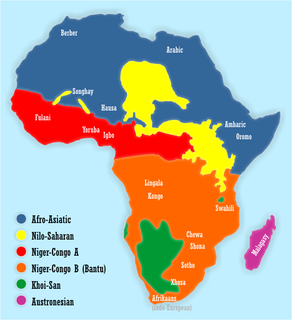Sobek, in Greek, Suchos (Σοῦχος) and from Latin Suchus, was an ancient Egyptian deity with a complex and fluid nature. He is associated with the Nile crocodile or the West African crocodile and is represented either in its form or as a human with a crocodile head. Sobek was also associated with pharaonic power, fertility, and military prowess, but served additionally as a protective deity with apotropaic qualities, invoked particularly for protection against the dangers presented by the Nile.

Kom Ombo or Ombos or Latin: Ambo and Ombi – is an agricultural town in Egypt famous for the Temple of Kom Ombo. It was originally an Egyptian city called Nubt, meaning City of Gold. Nubt is also known as (Nubet) or Nubyt (Nbyt). It became a Greek settlement during the Greco-Roman Period. The town's location on the Nile, 50 kilometres (31 mi) north of Aswan (Syene), gave it some control over trade routes from Nubia to the Nile Valley, but its main rise to prominence came with the erection of the Temple of Kom Ombo in the 2nd century BC.

The Temple of Kom Ombo is an unusual double temple in the town of Kom Ombo in Aswan Governorate, Upper Egypt. It was constructed during the Ptolemaic dynasty, 180–47 BC. Some additions to it were later made during the Roman period. The building is unique because its 'double' design meant that there were courts, halls, sanctuaries and rooms duplicated for two sets of gods. The southern half of the temple was dedicated to the crocodile god Sobek, god of fertility and creator of the world with Hathor and Khonsu. Meanwhile, the northern part of the temple was dedicated to the falcon god Haroeris, along "with Tasenetnofret and Panebtawy ." The temple is atypical because everything is perfectly symmetrical along the main axis.

Naqada is a town on the west bank of the Nile in Qena Governorate, Egypt. It was known in Egyptian as nbwt, which became Coptic Ⲉⲙⲃⲱ, which was borrowed as classical antiquity as Ombos. Its name derives from Egyptian nbw, meaning "gold", on account of the proximity of gold mines in the Eastern Desert.
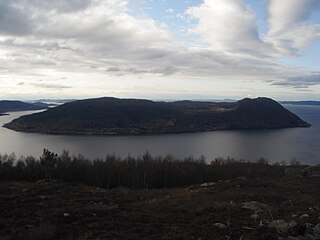
Ombo is the largest island in the Ryfylke region on the southwestern coast of Norway, and is the second largest island in Rogaland county. The 57.5-square-kilometre (22.2 sq mi) island of Ombo is divided between the municipalities Hjelmeland and Finnøy. There are several villages on the island including Jørstadvåg, Atlatveit, and Eidssund in the western part of the island which belongs to Finnøy municipality. The villages of Tuftene, Skipavik, Skår, and Vestersjø are located on the southeastern part of the island which belongs to Hjelmeland municipality. Jørstad Church is located in the village of Jørstadvåg.
Nebu is the Egyptian symbol for gold. It depicts a golden collar with the ends hanging off the sides and seven spines dangling from the middle.

Legio III Diocletiana was a comitatensis Roman legion, levied in 296 by Diocletian, from whom the legion took its name.

Ömböly is a village in Szabolcs-Szatmár-Bereg county, in the Northern Great Plain region of eastern Hungary.

The Egyptian tomb bat is a species of sac-winged bat in the family Emballonuridae. It is a medium- to large-sized microbat with a mass of approximately 30 g (1.1 oz). It is an aerial insectivore, foraging in open space. Based on individuals captured in Ethiopia, it is thought to feed predominantly on Lepidoptera, but is also known to feed on Isoptera, Coleoptera and Orthoptera.

A poverty map is a map which provides a detailed description of the spatial distribution of poverty and inequality within a country. It combines individual and household (micro) survey data and population (macro) census data with the objective of estimating welfare indicators for specific geographic area as small as village or hamlet.

Sêrxü County, also known as Sershul, Dzachuka, Serxu, or Shiqu is a county of the Garzê Tibetan Autonomous Prefecture in the northwest of Sichuan Province, China, bordering Qinghai to the west and the Tibet Autonomous Region to the southwest.

Neferkasokar was an Ancient Egyptian king (pharaoh) who may have ruled in Egypt during the 2nd dynasty. Very little is known about him, since no contemporary records about him have been found. Rather his name has been found in later sources.
Papyrus Oxyrhynchus 116 is a personal letter, written in Greek and discovered in Oxyrhynchus. The manuscript was written on papyrus in the form of a sheet. The document was written in the 2nd century. Currently it is housed in the Percival Library at Clifton College in Bristol, England.
Sebilian is a pre-historic archaeological culture in Egypt spanning the period c.13,000-10,000 B.C.

Randøy is an island in Hjelmeland municipality in Rogaland county, Norway. The 16.7-square-kilometre (6.4 sq mi) island lies just off the mainland between the Jøsenfjorden and the Årdalsfjorden. The large island of Ombo lies to the north and the island of Halsnøya lies to the west.
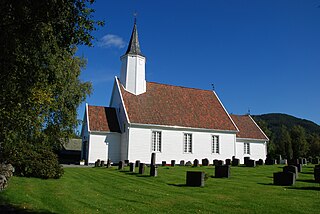
Jelsa is a former municipality in Rogaland county, Norway. The 130-square-kilometre (50 sq mi) municipality existed from 1838 until 1965. It encompassed area in the present-day municipalities of Suldal, Hjelmeland, and Finnøy that surround the Sandsfjorden. The administrative centre was the village of Jelsa, where Jelsa Church is located.
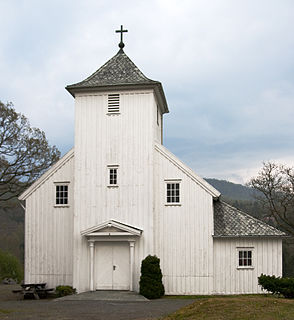
Jørstad Church is a parish church in Finnøy municipality in Rogaland county, Norway. It is located in the village of Jørstadvågen on the island of Ombo. The church is part of the Sjernarøy parish in the Tungenes deanery in the Diocese of Stavanger. The white, wooden church was built in 1929 by the architect Gustav Helland. The church seats about 150 people.
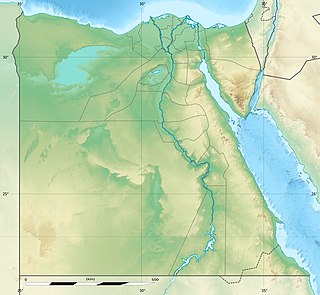
The Pyramid of Naqada, also called the Pyramid of Ombos, is part of a group of seven very similar small step pyramids, which were all erected far from the major centres of Egypt and about which very little is known. It is located about 300 metres north of the ruins of the ancient site of Ombos, near the modern city of Naqada in Upper Egypt. The first excavation was undertaken in 1895 by Flinders Petrie and James Edward Quibell.
Shang'ombo District is a district of Western Province, Zambia.
